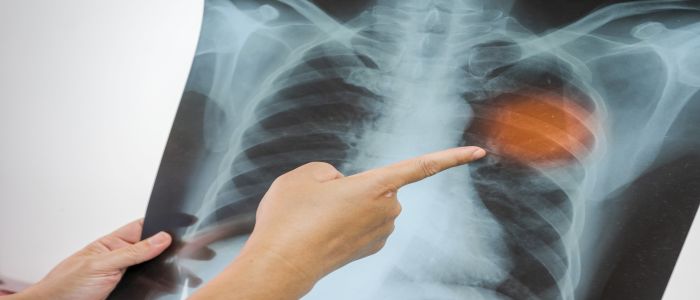Glasgow’s tuberculosis mass screening campaign changed the trajectory of the epidemic
Published: 5 November 2024
New analysis by the University of Glasgow has revealed that the city’s mass tuberculosis screening in 1957 prevented 4,600 cases of tuberculosis in the six years after the campaign.
New analysis by the University of Glasgow has revealed that the city’s mass tuberculosis screening in 1957 prevented 4,600 cases of tuberculosis in the six years after the campaign.

In what was one of the largest and most ambitious screening campaigns ever conducted, more than 715,000 Glasgow residents were screened with chest X-ray over a five-week period in March and April 1957. A centre with two X-ray units was erected in George Square along with 37 mobile radiography units staffed by volunteers across the city.
In the study, published in PLOS Medicine and led by Professor Peter MacPherson from the University’s School of Health and Wellbeing, data and population demographics were extracted from city Medical Officer of Health reports between 1950-1963.
The researchers found that before the mass screening (1950-56), tuberculosis notification rates were declining at 2.3% per year, but rates doubled in the year of the screening (1957). After the screening, tuberculosis notification rates declined at 5.4% per year, and there were an estimated 4,599 cases averted – equivalent to 43% lower than had the screening campaign not happened. These effects were consistent across all city wards.
Tuberculosis has severe health consequences for people who get sick, but also for their families and households, as people are often unable to work for a long time. The screening campaign likely had a major economic as well as health benefit for the people of Glasgow.
The study team are now in discussion with the World Health Organization (WHO) about analysing historical datasets from other cities – which have never previously been looked at – to confirm findings from Glasgow. This will provide insights into ongoing efforts to successfully implement active case finding interventions in countries with high rates of tuberculosis and with new screening tools and technologies.
Peter MacPherson, Professor of Global Public Health, said: “A single, rapid and high coverage round of mass tuberculosis screening, supported by intensive community mobilisation, likely had a major impact on changing the tuberculosis epidemiology trajectory in Glasgow.
“The current thresholds that WHO recommend for TB screening globally are where communities have more than 500 out of every 100,000 people with TB. But in Glasgow, we showed that all 37 neighbourhoods of the city had levels well below this, and still saw major benefits from the screening campaign.”
The study, ‘Impact of active case finding for tuberculosis with mass chest X-ray screening in Glasgow, Scotland, 1950-1963: an epidemiological analysis of historical data,’ is published in PLOS Medicine.
First published: 5 November 2024

